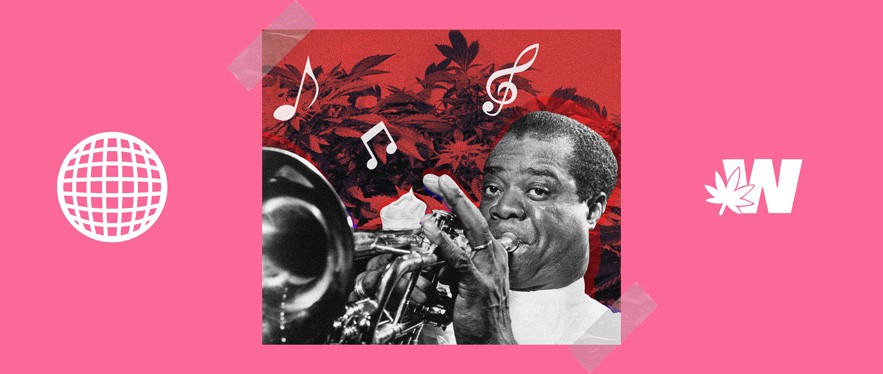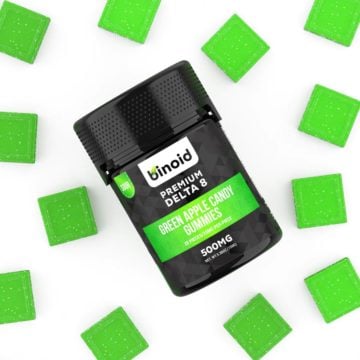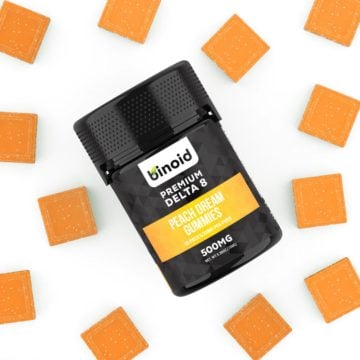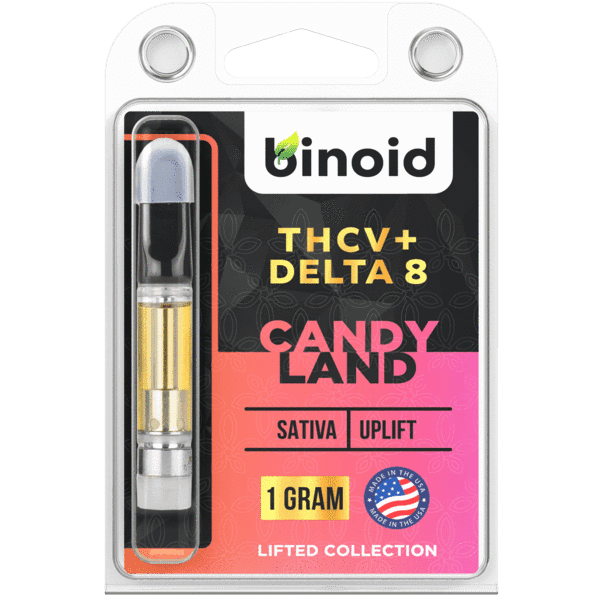
Top 5 Jazz Musicians Who Used Weed
Jazz music, with its roots in New Orleans and its journey through the bustling streets of New York, has a rich history intertwined with various aspects of African American culture. It’s a genre celebrated for its improvisation, innovation, and ability to reflect the times. Among the many stories that color jazz’s history, one theme stands out prominently – the use of cannabis by some of its greatest musicians. In this exploration of “Top 5 Jazz Musicians Who Used Weed,” we will delve into the relationship between jazz and marijuana, shedding light on how this illicit herb played a role in the lives and creativity of iconic jazz artists.
This post is intended as information and for general knowledge only. It is not a substitute for medical advice, diagnosis, or treatment. It is recommended that you talk to a healthcare professional about this before introducing cannabinoids into your daily routine (especially if you have been diagnosed with any medical conditions or are under any medication). It is not recommended to drive or operate any machinery when using cannabis- or hemp-derived products. Use responsibly!
Early Jazz and Cannabis
Jazz Origins
To comprehend the connection between jazz and cannabis, we must begin at the source. Jazz sprouted from the vibrant streets of New Orleans in the early 20th century, as African American communities infused their unique musical traditions with influences from various cultures. During this period, cannabis was relatively commonplace in the region, and its use began to find its place in the jazz scene.
Roaring Twenties
The Prohibition era of the 1920s saw jazz flourishing as the soundtrack to speakeasies and underground culture. Jazz musicians of this era were often entangled in a world of bootleg liquor and cannabis, colloquially known as the “reefer man.” This intertwined relationship between jazz and cannabis would only intensify as the genre gained popularity.
Key Figures
Early jazz luminaries such as Jelly Roll Morton and King Oliver were among the first jazz musicians known for their cannabis use. These pioneers paved the way for future generations of jazz artists, who would also turn to marijuana for inspiration and relaxation.
Louis Armstrong – The Cannabis Ambassador
Louis Armstrong’s Life

Louis Armstrong, born in the rough neighborhoods of St. Louis, emerged as one of jazz’s most influential figures. His journey from poverty to Grammy Award-winning glory is legendary. Armstrong’s early exposure to cannabis was a reflection of the harsh realities he faced growing up in New Orleans.
Advocacy for Cannabis
Louis Armstrong, often referred to as “Satchmo,” was more than a musician; he was a cannabis culture ambassador. He was unapologetically open about his use of marijuana, despite its legal prohibition during his time. Armstrong’s iconic smile often hid the fact that he was an advocate for cannabis, speaking candidly about its positive effects on his life and music.
Musical Influence
It’s believed that cannabis played a role in shaping Armstrong’s creative output. Tracks like “Muggles,” a term for marijuana, are said to reflect his affinity for the jazz cigarette. Whether in the studio or on stage, Armstrong’s relaxed demeanor and innovative trumpet playing were undoubtedly influenced by his marijuana use.
Billie Holiday – The Tragic Connection
Billie Holiday’s Impact
Billie Holiday, known as “Lady Day,” is an iconic jazz figure celebrated for her hauntingly emotional vocal style. Her contributions to jazz and popular music are immeasurable, but her life was marred by addiction, particularly to heroin.
Troubled Life
While heroin was her primary addiction, Billie Holiday was also known for her cannabis use. Her encounters with law enforcement due to drug use are part of her tragic narrative, showcasing the dark side of the intersection between jazz and drugs.
Some argue that Holiday’s experiences with cannabis influenced her vocal style and song choices. Her ability to convey deep emotion through her music may have been heightened by the effects of marijuana. Yet, her tragic life and untimely death serve as a stark reminder of the dangers of substance abuse.
Thelonious Monk – The Jazz Maverick
Thelonious Monk’s Contributions
Thelonious Monk’s contributions to jazz are monumental. His innovative and avant-garde approach to jazz composition pushed boundaries and challenged conventions, earning him a place among the genre’s greatest pioneers.
Monk’s Cannabis Use
Monk was known for his cannabis consumption. His relaxed demeanor and eccentric personality were, at times, attributed to his marijuana use. Monk’s dedication to his craft, often practicing for hours on end, was complemented by the calming effects of Mary Jane
Avant-Garde Influence
Some speculate that Monk’s experimentation with cannabis contributed to his unique musical style. His ability to create unconventional harmonies and melodies may have been influenced by the altered states of mind induced by marijuana.
Miles Davis – The Innovative Visionary
Miles Davis’s Impact
Miles Davis stands as a towering figure in modern jazz. His innovative spirit and willingness to explore new musical territories earned him a place as one of the greatest musicians in jazz history.
Davis’s Relationship with Cannabis
Like many of his peers, Miles Davis was no stranger to the jazz cigarette. He openly discussed his marijuana use, claiming it helped him relax and think more creatively. This revelation offers a glimpse into the role cannabis played in his artistic process.
Musical Innovations
Some of Miles Davis’s most groundbreaking work, including his masterpiece “Kind of Blue,” is considered a testament to his creative genius. The relaxed, introspective mood of the album is often associated with his marijuana use, reflecting how cannabis can shape the direction of an entire jazz album.
Conclusion
In the annals of jazz history, cannabis use has been a recurring theme, sometimes as an escape from hardship, sometimes as a source of inspiration. The stories of Louis Armstrong, Billie Holiday, Thelonious Monk, and Miles Davis illustrate how marijuana was a companion in their artistic journeys, influencing their music andpersonalities.
These jazz musicians, with their undeniable impact on the genre, represent a complex relationship between jazz and cannabis culture. It’s a reminder that creativity can often find solace in unconventional places, but it’s also a cautionary tale about the perils of addiction. As we celebrate the musical legacies of these jazz legends, we must remember that their lives were not just about the music but also about the personal struggles they faced.
In the broader context of popular music, the influence of cannabis on artists extends beyond jazz. Icons like Bob Marley, Willie Nelson, and Snoop Dogg have also openly embraced marijuana as part of their creative process. The enduring allure of the jazz cigarette in the world of music remains a testament to its cultural significance.
In the end, the jazz musicians who used weed not only shaped the course of jazz but also left an indelible mark on the broader canvas of popular music. Their stories serve as a reminder of the intricate relationship between art, culture, and substances like cannabis, sparking discussions about its impact on creativity, lifestyle, and the artistic process itself.
Also Interesting:
















